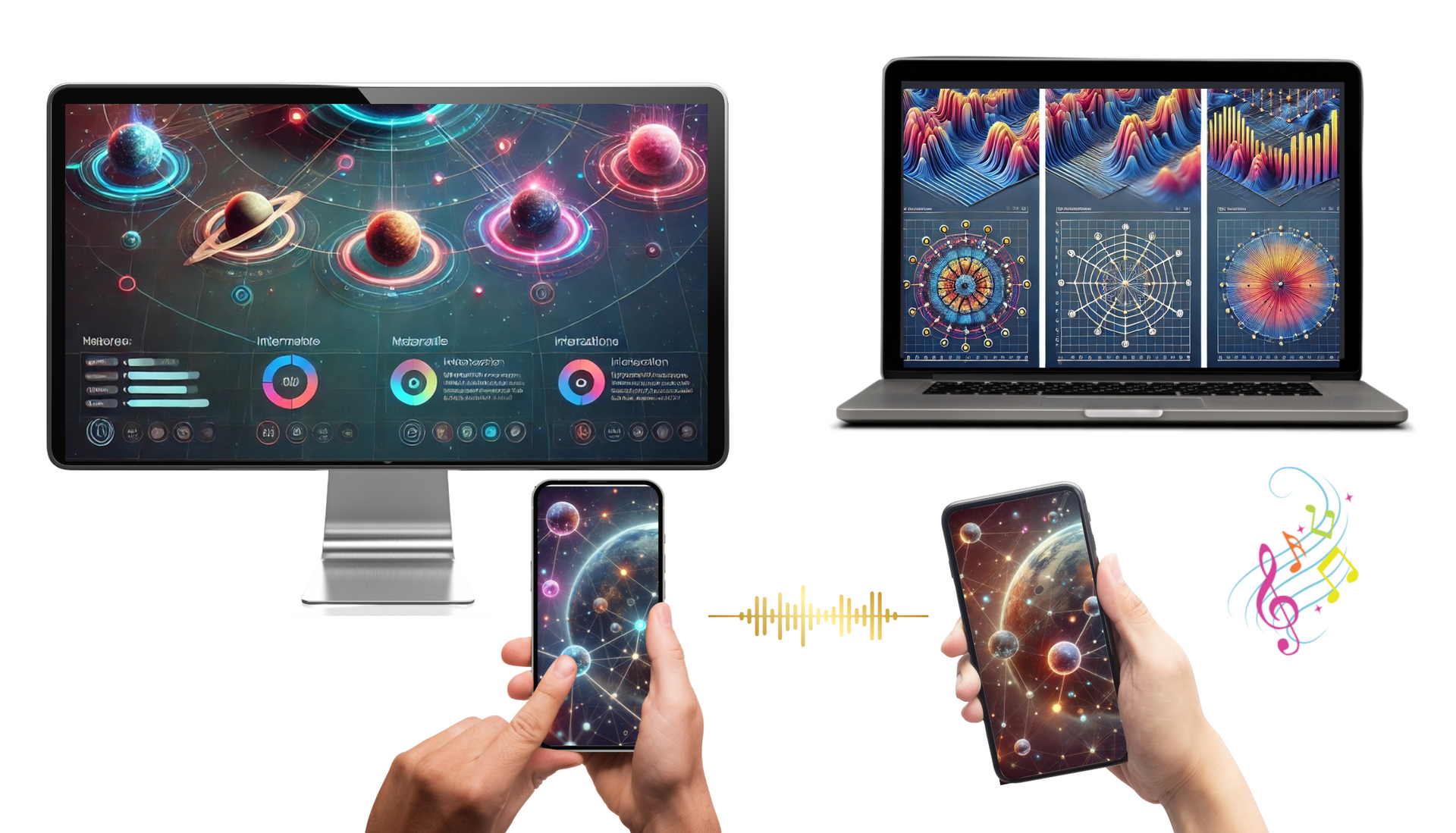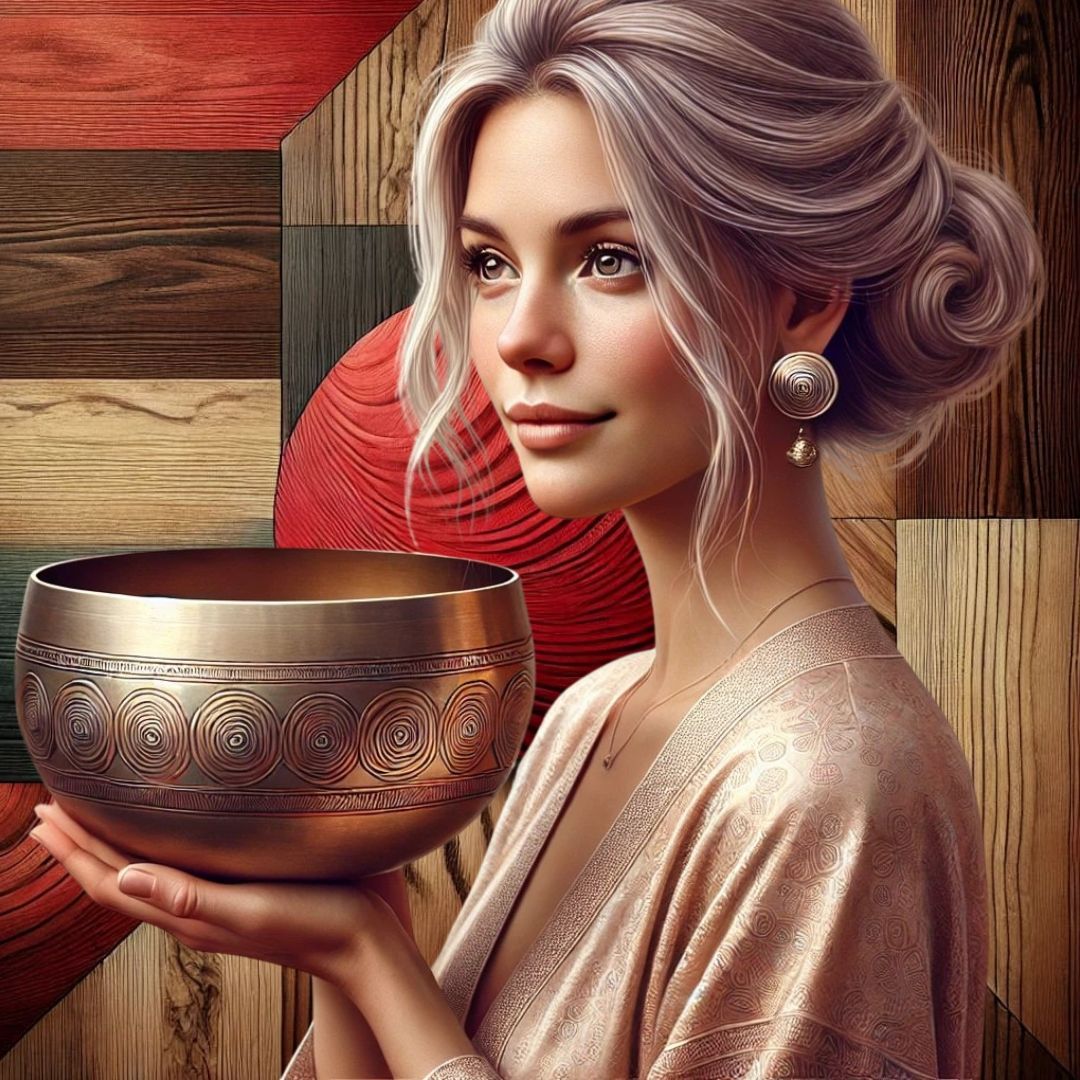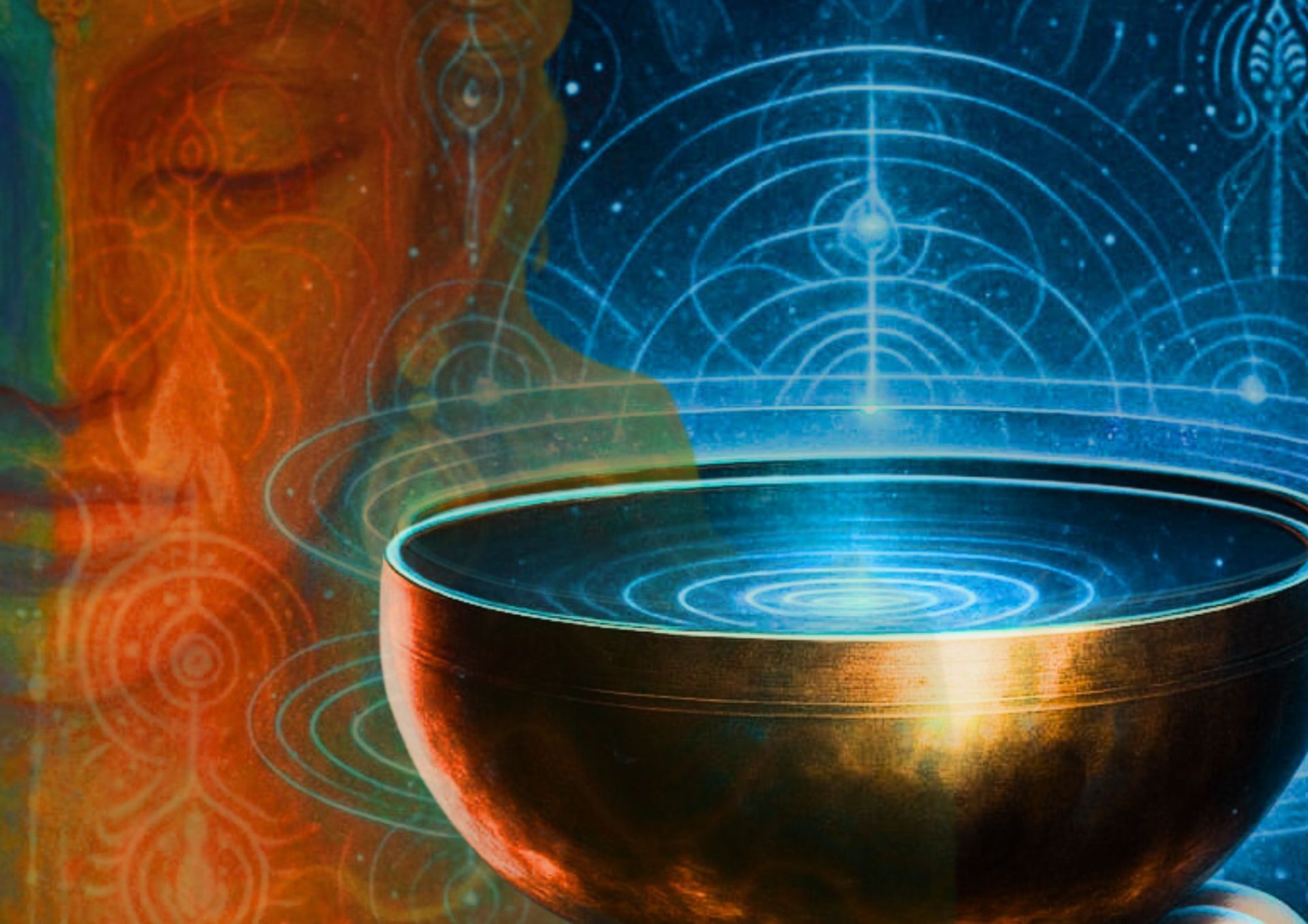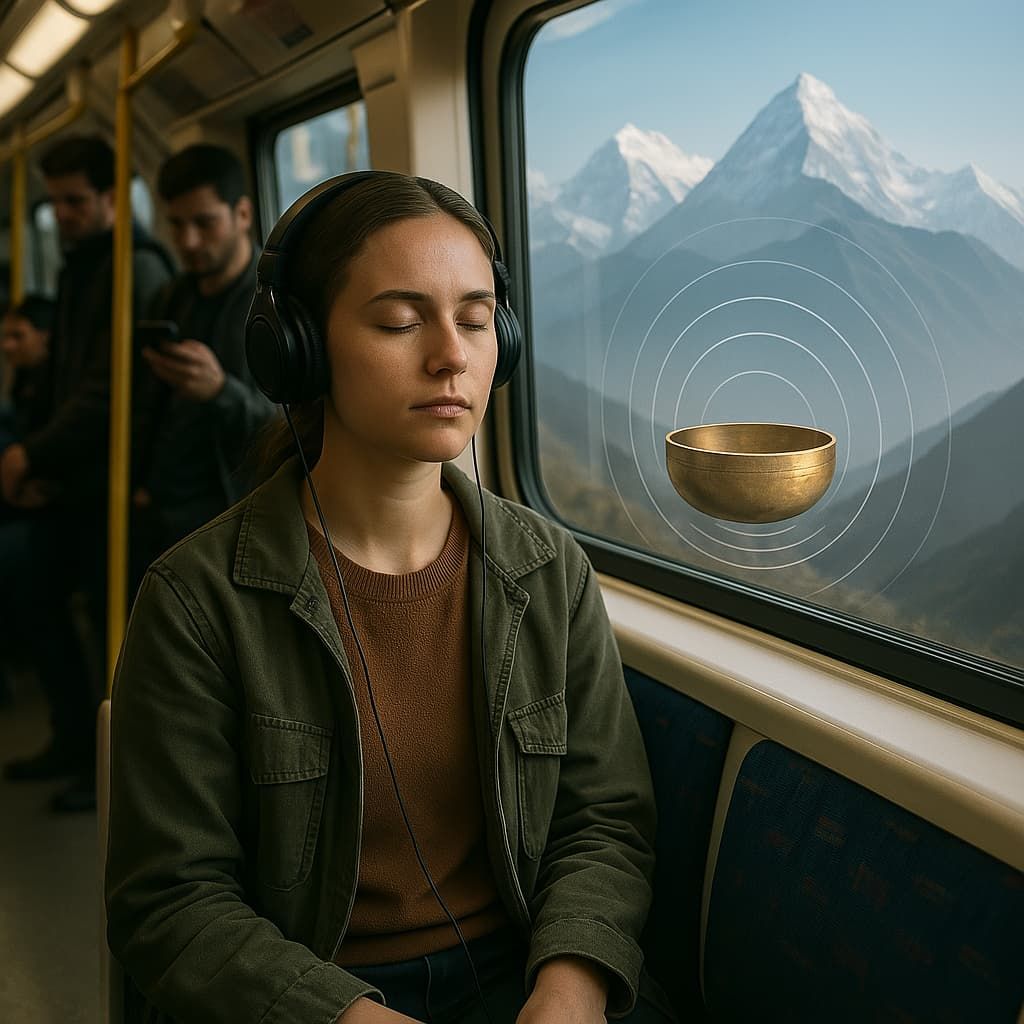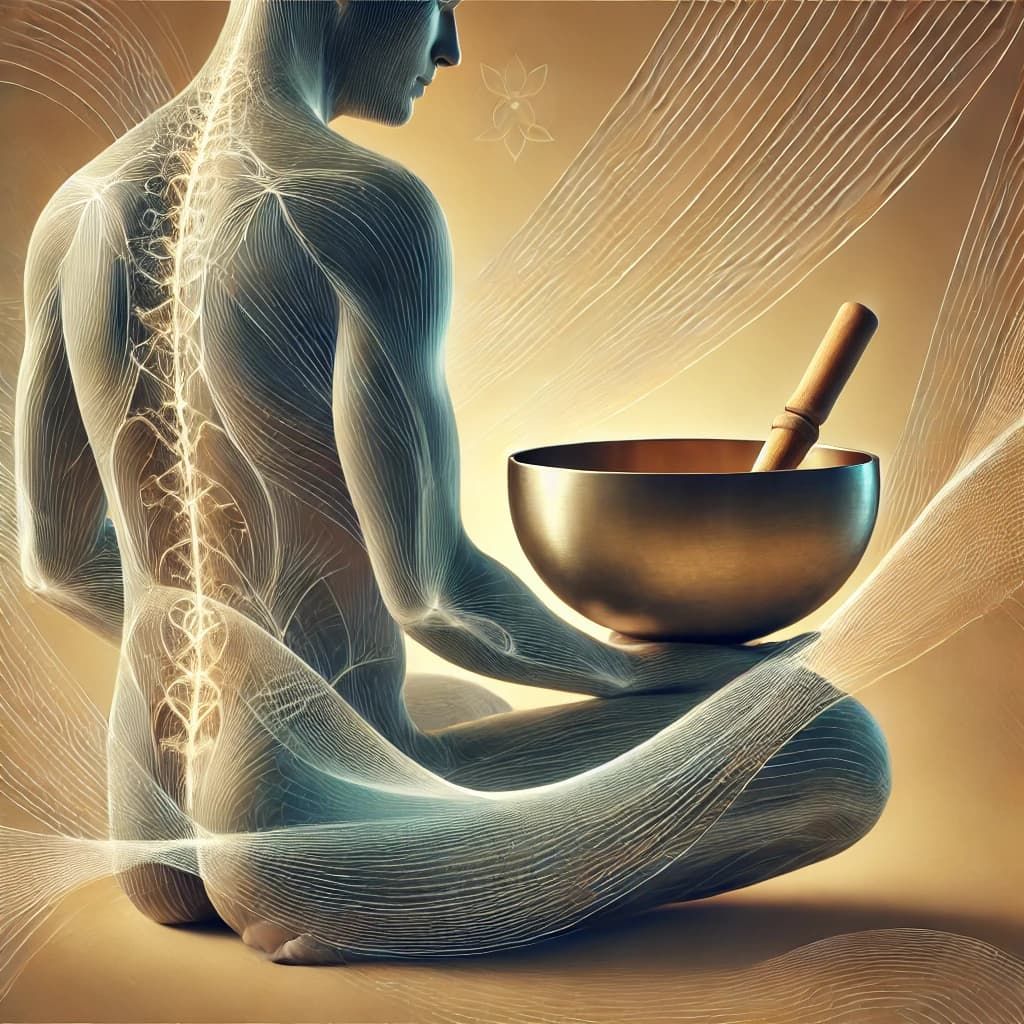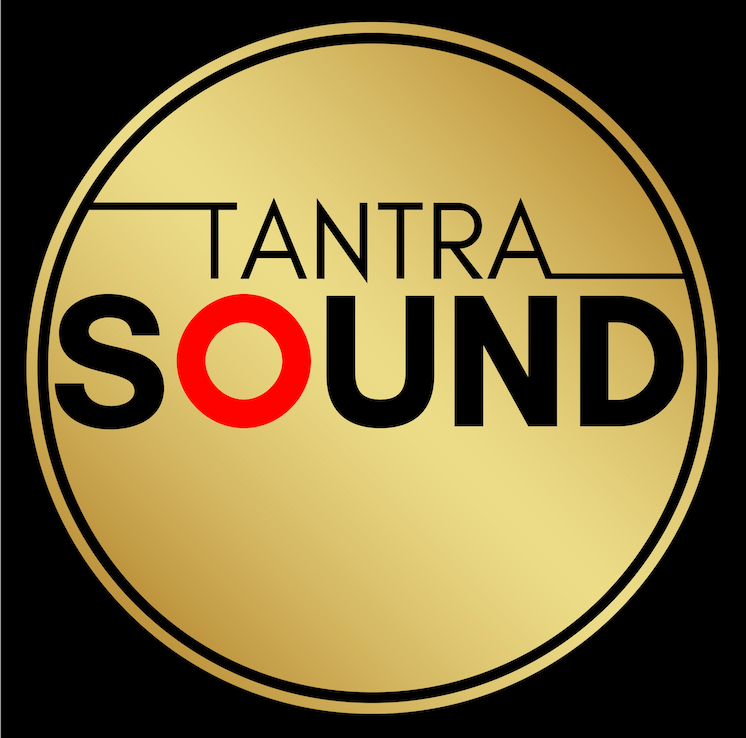Arc-en-Ciel: WHITE PAPER @ FOUNDATIONS
II. Problem & Resolution for Evolving
Digital Realities.
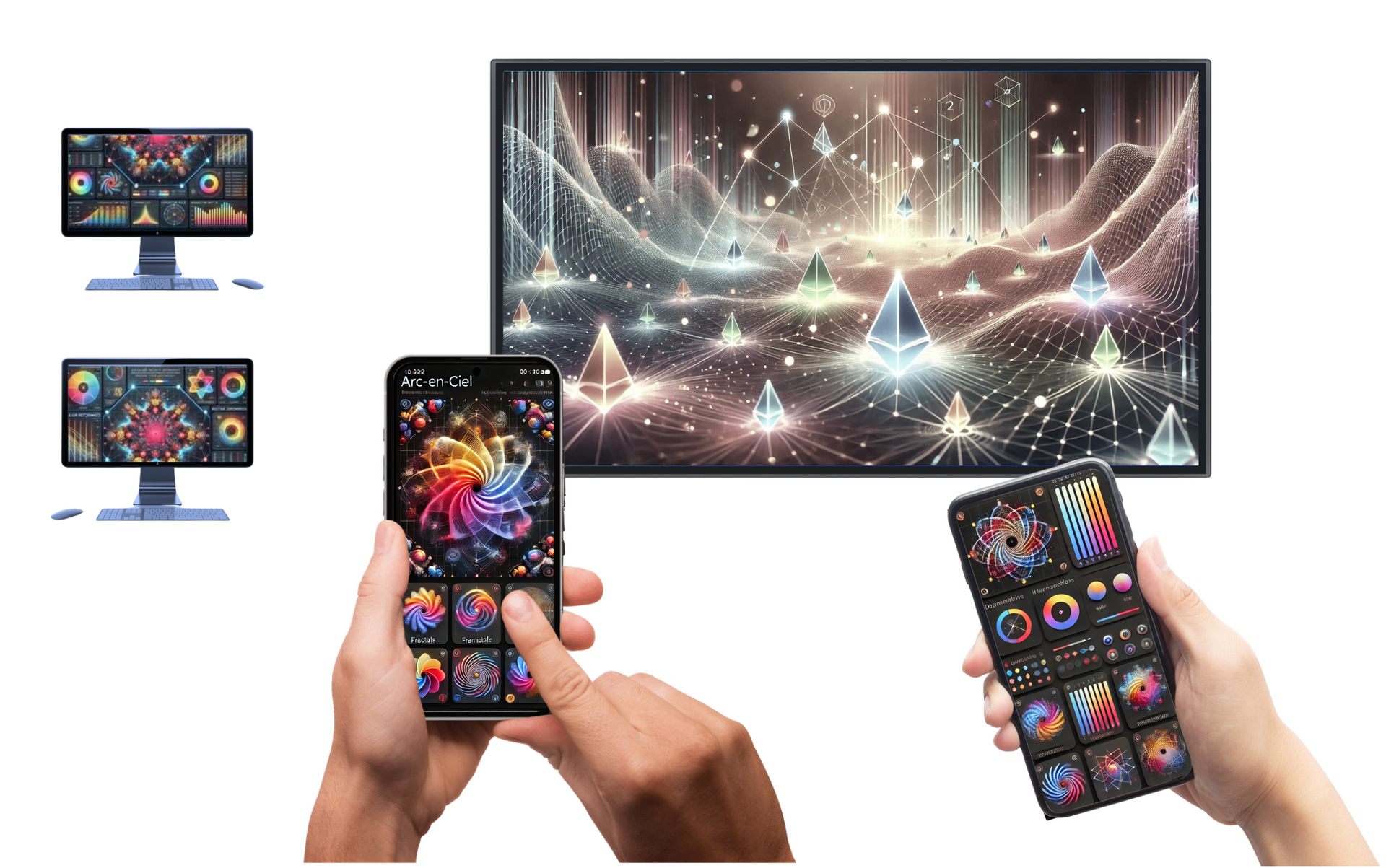
Foundation 1: Arc-en-Ciel as a Global Vision
The binaural fragmentation of digital systems creates inefficiencies. Platforms operate in silos, failing to provide a unified framework for interaction and interoperability. This results in duplicated efforts, wasted resources, and diminished accessibility. The digital world, far from being a cohesive ecosystem, often mirrors the isolated hierarchies it sought to replace. By redefining the function and scope of NFTs, Arc-en-Ciel introduces a framework that transcends current limitations, proposing a decentralised yet harmonious interaction of data, art, and value.
Arc-en-Ciel envisions NFTs not as static representations of ownership but as living entities capable of interacting, evolving, and harmonising with their owner, themselves and with other NFTs. By leveraging a foundation of color gradients and harmonic frequencies, the project unifies three critical elements:
- Decentralised Data Integration.
- Mathematical Precision.
- Human-Centric Design.
Arc-en-Ciel employs a triangulated structure based on three fixed points that act as anchors for its dynamic data framework. This system mirrors 'trilogical' balance, allowing data to exist in a state of interaction rather than competition. It reflects the interplay of mathematical certainty and creative fluidity, ensuring that every interaction contributes to the system's coherence. Within this ecosystem, each NFT becomes a node in a living system, adapting to new metadata, and responding to user-defined or environmental changes. This dynamism opens the door to a myriad of applications, from art and music to education and beyond. The system is designed to democratise participation, allowing individuals, creators, and organisations to engage with its tools without significant barriers. This inclusivity fosters innovation and expands the ecosystem's reach. The Arc-en-Ciel vision resolves the stagnation of current blockchain systems by introducing a framework where technology and creativity coexist seamlessly. Its decentralised, human-centric approach provides a blueprint for:
- Redefining collective digital ownership through dynamic NFTs.
- Expanding blockchain's utility beyond financial speculation.
- Offering a creative integration of technology, art, & data.
Foundation 2: The Arc-en-Ciel Coding System
The Arc-en-Ciel coding system is designed to organise data through a framework that combines chromatic & acoustic principles with mathematical precision. This triadic structure creates a flexible, multi-dimensional approach where relationships between variables are mathematically defined yet inherently intuitive for technology & humans. The coding system’s primary elements are:
- Seven Dynamic Variables
- Three Fixed Reference Points
- Triangular Structure Relationships
Each of the seven variables in the Arc-en-Ciel Triangulation System (ACTS) is positioned in relation to the three fixed points, creating a multi-layered framework where every point interacts continuously with the others. The fixed points serve as constants at every layer within the system. Each variable exists related to their state of flux, capable of interacting dynamically with others while maintaining proportional relationships to their three fixed pillars. Key capabilities include:
- Dynamic Metadata where each NFT’s metadata evolves based on its interactions within the system.
- NFTs interact with one another based on their coding trilogic, creating unprecedented opportunities for collective compositions.
- The coding system is designed to expand effortlessly. New variables or layers can be integrated without disrupting the existing framework, ensuring that the system remains future-proof.
In
Digital Art, artists can create NFTs that dynamically evolve based on user interactions, environmental conditions, or predefined parameters. For example, an artwork could change its attributes over time, creating a living piece of art.
In Music and Sound Design, the system allows for the integration of sound frequencies into NFTs, enabling composers to design sequences that harmonise with other NFTs. This could lead to collaborative copyrighting experiences.
In Data Visualisation, organisations can use the coding system to visualise complex datasets in a way that aligns with complex mathematical principles. For instance, NFTs attributes could represent real-time changes in complex environmental or financial data.
Foundation 3: Mathematical Circulation
ACTS combines geometric principles with dynamic mathematical relationships, by positioning data points within a stable yet flexible structure. Inspired by systems where balance emerges from proportional relationships, this framework organises all variables and interactions into a coherent mathematical model. The process is defined by three key elements:
- Three Primary Constants of the System (Anchors)
- Seven Dynamic Variables extracted & inter-related within the three fixed points.
- Proportional relationships ensure that changes in one part of the system ripple across the entire ratios framework.
The three fixed points are treated as immutable reference coordinates within a multidimensional space. Each point is associated with:
- A primary color
- A corresponding frequency
- A spatial position, ensuring that every variable or interaction is anchored to a stable reference detached from time-related data.
The seven dynamic variables are mapped within the triangular space defined by the fixed points. Each variable’s position is determined by:
- Weighted proximity to each fixed point, calculated using classic harmonic ratios.
- Frequency alignment, ensuring that every variable resonates proportionally within the system it contains and the system it is part of.
- Interdependence with any other variables, maintaining systemic balance.
As variables interact or evolve, the triangulation system recalibrates their positions and relationships. This dynamic adjustment is governed by harmonic balance equations and feedback loops, maintaining proportional integrity while allowing multi-dimensional scalability for Metadata value.
ARCS provides a robust platform for innovation, interactivity, and harmony. This triangulation system not only supports the technological advancements of Arc-en-Ciel but also lays the groundwork for a broader redefinition of how data, art, and technology converge & flourish in decentralised ecosystems.
Foundation 4: The Arc-en-Ciel Token (RNBOW)
The Arc-en-Ciel Token, or RNBOW, is designed as a multi-functional utility token that facilitates dynamic interactions, incentivises participation, and enables the seamless operation of the system’s foundational elements. This token embodies the project’s core principles of multi-layered balance, transparency, and decentralisation. Unlike traditional cryptocurrencies that primarily serve as mediums of exchange or stores of value, RNBOW introduces functionalities that extend its purpose far beyond simple transactions. It acts as the connective tissue of the Arc-en-Ciel framework, supporting the system’s dynamic interactions and fostering collaboration among users, creators, and developers.
Key Features of RNBOW
- The token adapts to the needs of the ecosystem, functioning as a transactional medium, a governance tool, and a mechanism for unlocking new features or content.
- It directly interacts with Arc-en-Ciel NFTs, enabling the evolution of metadata, collaborative compositions, and the creation of dynamic relationships between assets.
- Users are rewarded with RNBOW for meaningful contributions to the ecosystem, such as creating NFTs, participating in governance, or engaging with interactive features.
RNBOW’s design reflects a careful balance between utility and value, prioritising long-term engagement over short-term speculation. RNBOW facilitates the continuous evolution of NFTs by acting as the medium through which metadata updates are executed. For example:
- A creator may use RNBOW to modify an NFT’s attribute, aligning it with new goals.
- Collaborative NFTs can pool metadata changes through RNBOW, creating shared outputs that reflect multiple contributions.
The token empowers community-driven decision-making through a Decentralised Autonomous Organization (DAO). RNBOW holders can propose and vote on key decisions, such as the adjustments to the ecosystem’s rules or mechanics or the allocation of resources for development or community initiatives. This governance model ensures that Arc-en-Ciel evolves in respect with the collective vision of its participants.
RNBOW incentivises users to engage with the system by:
- Rewarding active participation with other NFTs.
- Offering exclusive features NFTs, content, and tools for token holders.
- Facilitating the exchange of services or creative outputs within the community.
Through its programmable design, RNBOW can integrate with external systems, enabling real-world applications such as:
- Tokenized access to events or experiences.
- Partnerships with industries like art, music, or education, where RNBOW acts as a medium for value exchange.
Economic Design and Sustainability
RNBOW’s value is tied to its functionality, rarity, & connectivity within the ecosystem rather than external markets. The total supply of RNBOW is capped at 77,777 tokens, reflecting the project’s emphasis on precision and harmony. This fixed supply ensures scarcity while allowing for predictable economic modeling. A significant portion of RNBOW is reserved for rewarding early adopters, contributors, and participants. Tokens are allocated to collaborators and organisations that align with Arc-en-Ciel’s mission while a reserve is maintained to support future developments, expansions, or unforeseen needs.
Applications of RNBOW Token
1. Artists & Creators use RNBOW to access tools for generating dynamic NFTs, modify or enhance existing creations, & collaborate with other users in the ecosystem.
2. Investors & Explorers can pool RNBOW to create shared outputs during competitions or events where rewards incentivise innovation and participation.
3. Cross-Ecosystem integration with External Platforms, enabling partnerships with other blockchain ecosystems, enhancing NFT utility and applications in real-world industries.
Foundation 5: Non-Competitive User Interfaces with Prismatics
The Prismatics System and its innovative user Prisma Interfaces represent Arc-en-Ciel’s commitment to bridging modern world technology & human perception. Designed to integrate visual, auditory, and interactive elements into a unified experience, these interfaces redefine how users experience and deepen the engagement with digital ecosystems. Rooted in the Arc-en-Ciel system, Prisma allows users to explore the dynamic relationships between color gradients, frequencies, and digital assets, where every interaction combines visual & auditory in the digital space, ensuring that every element is balanced and coherent for human creation. Interfaces adjust in real-time to user inputs, preferences, and environmental conditions, offering the most personalised and intuitive experience ever achieved. Prismatics introduces several groundbreaking features that differentiate it from traditional user interface systems:
1. Synchronisation of colour and sound.
2. Real-time adaptation.
3. Accessibility and inclusivity through new visual accessibility tools & auditory enhancements.
4. Non-competitive Interfaces.
Prisma is designed to transform user interaction across various domains, making it versatile and impactful in domains such as:
- Artistic Creation: Artists can leverage the system to create multi-layered digital compositions that evolve dynamically. NFTs generated through Prisma can integrate both visual and auditory metadata, enabling buyers to own unique, interactive artworks that exist in their own digital space.
- Metalearning Tools: Explorers can use Prisma to learn creative investment through ratios, by directly experiencing the harmonic relationships between colours, frequencies, and mathematical fundamentals.
- Immersive Experiences: The system is ideal for immersive applications such as virtual reality (VR) and augmented reality (AR). Users can explore virtual environments where interactions are enhanced by synchronised color and sound feedback.
Prisma interfaces are fully integrated with the Arc-en-Ciel triangulation and coding systems, aligning mainstream technology with unexplored harmonic principles.
Foundation 6: Harmonisation & Data Storage
Harmonisation is not a symbol, it represents an active process of multidimensional connectivity in Arc-en-Ciel. It aims to dismantle isolation, whether in the form of digital assets, human interactions, or technological systems, by reintegrating them into a fluid space of communication and coexistence. In this context, harmonisation is based on the dynamic balance of the elements within a given system, enabling alignment beyond traditional boundaries. It acts as a “bridge” between different dimensions, disciplines, and entities.
Arc-en-Ciel introduces an innovative approach to data storage and harmonisation, solving key challenges related to redundancy, inefficiency, and accumulation in traditional systems. Our system uses a base structure built on three primary variables (1, 2, 3), interconnected with seven additional variables. This harmonic framework ensures that every piece of data is uniquely identified and relationally integrated, eliminating the need for duplicate entries or redundant storage systems. The number seven, central to this framework, serves as the balancing element, allowing data to flow and recycle seamlessly within a closed mathematical loop.
- Data Recycling Through Integration: Instead of duplicating data across multiple platforms or interfaces, the Arc-en-Ciel system recycles existing data through relational integration. This process optimises storage by linking interconnected variables rather than storing them separately, reducing storage requirements significantly.
- Minimized Redundancy: Traditional storage systems often rely on duplicative methods to ensure accessibility and functionality. By employing a triangulated loop system, Arc-en-Ciel eliminates these inefficiencies, potentially reducing data storage usage by 30-50%, depending on the application.
- Universal Accessibility: The seven-variable structure allows for seamless alignment of datasets across different platforms and user interfaces, creating a harmonised data environment. This approach ensures that all stored information is accessible, interconnected, and readily usable without requiring extensive migration or restructuring.
- Scalability and Adaptability: The dynamic nature of the system allows for easy scaling as new data is introduced. Unlike traditional methods that require significant additional storage for expansion, the harmonic framework accommodates growth without increasing complexity or cost.
Why the Number Seven?
The number seven plays a pivotal role in the Arc-en-Ciel system. Known for its harmonic and structural properties in Art, seven acts as the
balancing variable, ensuring that the relationships between the three core variables and the extended dataset remain stable and efficient. This configuration not only simplifies the representation of complex datasets but also supports the
circular recycling of data, aligning with the principles of sustainability and minimalism in digital storage. By integrating this coding system, Arc-en-Ciel drastically reduces the reliance on external storage platforms and fragmented data ecosystems. User interfaces become lighter and more responsive as redundant data is eliminated. Blockchain storage requirements are minimized, lowering transaction costs and improving system efficiency. The system fosters a
conscious approach to data management, encouraging developers to think critically about the relationships and utility of the data they create.
The Arc-en-Ciel approach to harmonisation and data storage not only solves current inefficiencies but also sets a foundation for future systems. Its ability to integrate, recycle, and optimise data ensures that digital ecosystems remain sustainable, scalable, and aligned with human-centric values. By addressing the critical issue of data accumulation head-on, Arc-en-Ciel creates a streamlined infrastructure ready for the demands of next-generation technologies.
What Kind of Data Will Arc-en-Ciel Generate?
The harmonisation process in Arc-en-Ciel will produce multi-layered, relational data, which can be used in various contexts. Here are a few examples of the types of data and their potential applications:
- Interaction Data: How users interact with colors, frequencies, and tokens. Patterns of connectivity between digital assets, allowing the system to map complex relationships in real-time.
- Harmonic States: Real-time outputs showing the harmonic balance or imbalance within the system. These states can inform governance decisions, token distributions, or user feedback loops.
- Behavioural Insights: User preferences derived from their interaction with different dimensions (color-frequency ratios, transactions, or token exchanges). These insights can refine the system or even inspire new NFTs or functionalities.
- Evolving Metadata: Metadata that changes based on real-world or virtual interactions, offering a layer of dynamic storytelling or evolution within the ecosystem.
Visualising Harmonised Data
This application is particularly valuable in fields such as education, research, and business intelligence. The data generated by Arc-en-Ciel could be presented in innovative ways, such as:
- Interactive Dashboards: Showing the real-time relationships between NFTs & user decisions.
- Harmonic Maps: Visual or auditory data representations of the system’s current state, offering users and developers insights into its overall balance.
- Custom Reports: For individuals or organisations seeking tailored insights into their activity within the ecosystem.
Harmonisation is the foundation of connectivity. It provides a new lens for understanding relationships within digital systems, moving beyond isolated values of binary to embrace an interconnected, dynamic reality of a colorimetric data space. The data it generates becomes a tool for creating more intuitive, balanced, and meaningful experiences.
